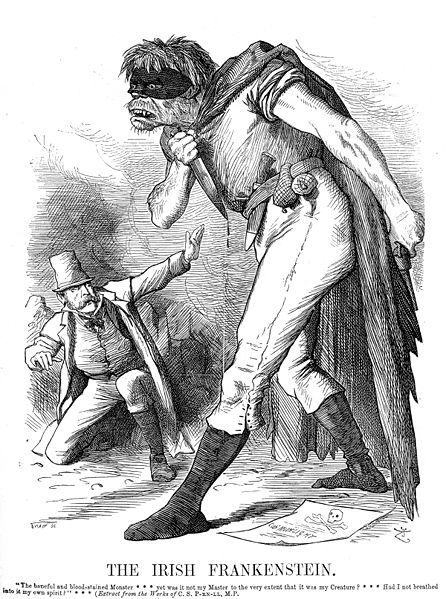1. Poor Ernest Frankenstein. Type his name into Wikipedia and you’ll receive an amusing but reasonable redirect:
Ernest gets little page time. He isn’t mentioned in a letter to Victor in which Elisabeth does spend time discussing his other brother (William), and he oddly drops out of Victor’s remembrance instead of becoming more dear as his last remaining family member. (Stuart Curran’s Romantic Circles edition of Frankenstein collects the few references to Ernest here) What is Ernest even doing in the novel? I’d love to compare his place in the different versions of the work–I think it was Curran who suggested that Ernest is written slightly differently in the 1831 edition, and the fact that he remains in the book by that point (with Victor’s forgetting uncorrected) suggests Ernest’s vanishing role is worth exploring.
2. What do you make of the strange painting of Victor’s mother posed by her father’s coffin (a particularly creepy subject for Victor’s father to specifically commission)? Does this fit in with Steven Jone’s Freudian reading of Victor’s dream? Or were such subjects par for the course at the time? (Photographs of recently deceased children made to look like they were sleeping weren’t abnormal for the Victorians–though why paint a remembered person as dead/encased in a coffin when you could imagine him as alive within the painting? Did showing his true state conform to some sort of belief about naturalness/reality as reflected by painting?)
I gazed on the picture of my mother, which stood over the mantel-piece. It was an historical subject, painted at my father’s desire, and represented Caroline Beaufort in an agony of despair, kneeling by the coffin of her dead father. Her garb was rustic, and her cheek pale; but there was an air of dignity and beauty, that hardly permitted the sentiment of pity. (Shelley, Frankenstein, unknown page located in Project Gutenberg e-text)
3. In Jones’ Against Technology, he refers to “the story of Frankenstein’s creature who turns into a monster” (my emphasis, 1), an assertion that writes the character as first simply a creature, later monstrous. Is the monster’s monstrosity a result of his manner of birth, his grisly components and visage, or his evil actions? Does he become more or less monstrous during the novel as he gains knowledge, civilization, and other attributes of “humanity”–or does he perhaps simultaneously approach and recede from humanity?





